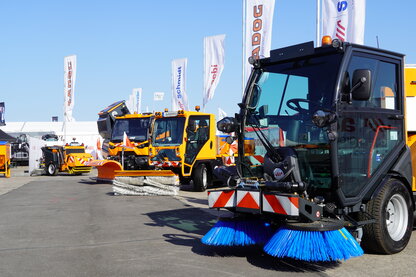
Bringing Fresh Variety to Demopark 2025
Demopark is Europe’s largest open‑air exhibition for municipal services and landscaping - and one of the few shows where you can actually hop on the machines, test them, and feel how they work in real life. In June 2025 the Aebi Schmidt Group used the event to unveil its expanded portfolio on a shared stand featuring both Aebi Schmidt Deutschland and LADOG.
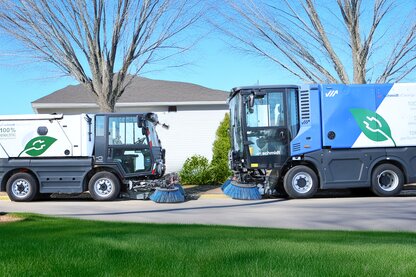
Electric Sweeper Matchup: Big Performance. Small Footprint
From bike lanes to boulevards, Schmidt’s electric sweepers are redefining street-cleaning with high performance and zero emissions. The compact eSwingo 200+ and the high-capacity eCleango 550 are purpose-built for different environments—but both deliver clean streets, clean air, and quiet, reliable operation. With industry-leading PM10 and PM2.5 certifications, they prove you don’t need fossil fuels to tackle tough sweeping tasks—and show that going green doesn't mean slowing down. Find out which sweeper is right for your streets.

Aebi Schmidt Group has successfully completed the merger with the Shyft Group and can start work as a global speciality vehicle manufacturer
CH-Frauenfeld, 1 July 2025 - Aebi Schmidt has successfully completed the merger with The Shyft Group and the joint company, which will continue to operate as the Aebi Schmidt Group, is ready to commence operations.

Next Generation Meets CEO – Talk with Barend Fruithof
What would apprentices ask their own CEO? How to negotiate a pay raise? Career advice? Or maybe just his favorite restaurant? Our apprentices in Burgdorf recently had the chance to sit down with our CEO – and they made the most of it. Not for a typical interview, but for the questions they truly cared about.
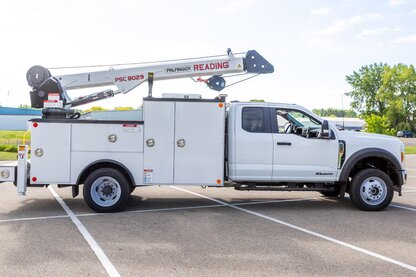
Monroe Truck Equipment Crane Packages Do the Heavy Lifting
When it comes to safety on any jobsite, one truth is constant: an extra hand is always welcome. Whether you're replacing a bulldozer track, repairing a water main, or lifting a massive generator onto a barge, safety and efficiency are critical. With purpose-built crane bodies designed to handle the toughest jobs, Monroe Truck Equipment tailors each crane package to keep workers safe and make every lift easier.
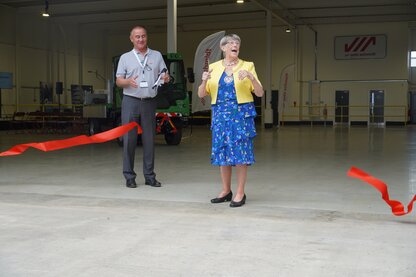
Big Machines, Big Ideas – And a Big Step for Aebi Schmidt UK
What happens when you mix a new production facility, industry insights and live demonstrations of sweeping machines – plus an impressive display of winter maintenance and airport equipment? A packed day in Peterborough – and a clear sign of Aebi Schmidt’s growing commitment to the UK market. Here’s a look back at our Open Day 2025.

Shareholders of The Shyft Group approve merger with Aebi Schmidt
CH-Frauenfeld, June 18, 2025 – The shareholders of The Shyft Group yesterday approved the merger with Aebi Schmidt Group by 99% percent of the shares voted, representing approximately 81% of the total outstanding shares. This means that the Swiss specialty vehicle manufacturer based in Frauenfeld can definitively merge with the The Shyft Group. Aebi Schmidt will hold a 52 percent majority stake in the combined company, which will be traded on the NASDAQ Stock Market under the symbol AEBI. The transaction is expected to be completed around July 1, 2025.
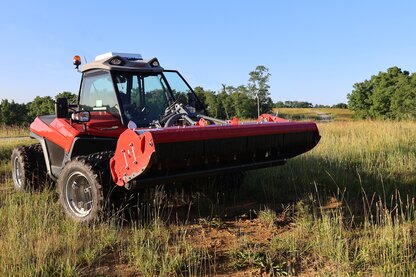
From Customer to Dealer: How Holland Farms Found a Perfect Match in Aebi Tractors
Johnny Philippo of Holland Farms in Kentucky never set out to become a tractor dealer. Initially, he was just looking for a machine that could safely handle the steep hills and rugged terrain of his family’s farm. But after using the Aebi TT 281+, that changed.
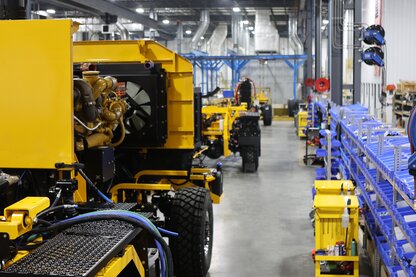
Engineering Efficiency: MB Gives Its Production a Big Boost
At Aebi Schmidt North America’s Chilton facility, innovation never stands still. Roughly a year ago, the team completed a major transformation of one of its snow equipment assembly lines, boosting output by over 100% without adding headcount. That success wasn’t just a milestone — it became a springboard.

LADOG is honoured as Champion of the Black Forest Power Region
The regional economic development agency of the German Black Forest Power Region, together with Dortmund University of Applied Sciences and Arts, scrutinised the region in the northern Black Forest for six months and, among other things, recognised LADOG as a "hidden champion". But why "hidden"? And what does the award actually mean?
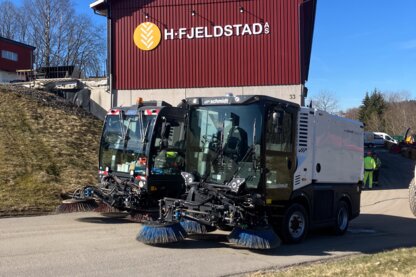
Trial run convinces – H. Fjeldstad AS chooses the Cleango 550
What happens when a customer falls in love during a product demonstration? For H. Fjeldstad AS, it was the beginning of a very special success story. When a sweeper impresses from the very first moment – and continues to deliver in everyday operation – it’s a perfect match.
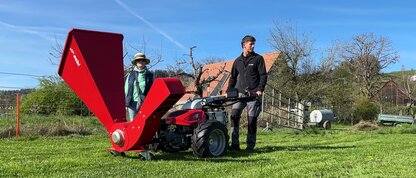
Rethinking Agriculture: How One Farm Is Shaping the Future
A visit to Weitsicht farm estate makes one thing clear: this is where the future of farming is being reimagined. Instead of settling for compromises, estate manager Eva Kollmann is taking a clear and consistent path towards CO₂-neutral production. A key part of this vision? Electrification.
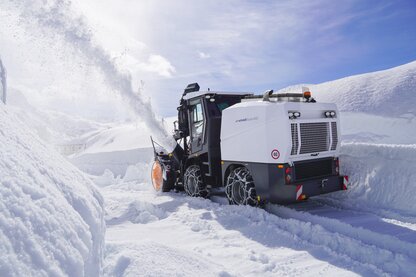
Snow clearance on the Gotthard Pass road - a case for our most powerful machines
Today, the Gotthard Pass road, one of the most famous and historically significant Alpine crossings in Europe, was reopened to private transport. To ensure that the approximately 64 km long route, which leads to over 2,106 metres above sea level, can be driven on safely, two teams on the north and south sides are using powerful machines to clear and repair the roads for around six weeks each. The fleet included a Schmidt Supra 4002, an Aebi Terratrac TT 282 and an Aebi VT 470 Vario transporter.
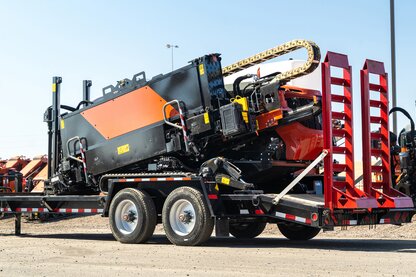
Heavyweight Matchup: The T-24D Trailer and Directional Drills
Towmaster’s T-24D was built with the future in mind. With a rugged frame, smart design, and the muscle to move bigger, heavier drills without breaking a sweat, this trailer is all about performance under pressure. Bob Pace, Towmaster Trailer’s Inside Sales Manager says, “The T-24D hauls more without maxing out the tandem-axle drop-deck like some other trailers, plus it helps crews transport these drills in a way that’s safer and more efficient,” From hauling capacity to jobsite safety, learn why this trailer was built to lead the pack.

Meet the Mighty MB7BT: Small Size, Big Impact
The MB family proudly welcomes its newest addition, the MB7BT Bi-Directional Tractor. Though more compact than MB’s airport maintenance siblings, don’t let its size fool you. The MB7BT is built to make a big impact at airports across the globe, offering the perfect blend of power, maneuverability, and flexibility for year-round operations.
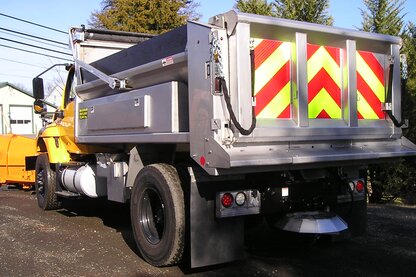
The Swenson APB Select: A Spreader/Dump Body Combo That’s a Versatile Workhorse
Finding the sweet spot between cost and value is a serious skill, whether you’re managing a shopping budget or running a business. For municipal fleets, landscapers, and private contractors who are looking for dump body equipment that can multi-task for year-round operations, the Swenson APB Select may fit the bill. Learn more about Swenson’s unique design and how it will get you the most mileage out of your money.
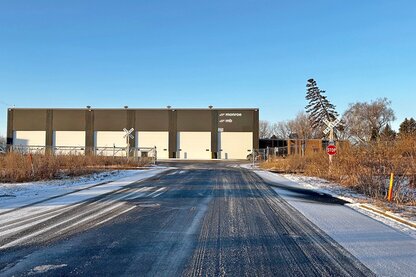
Aebi Schmidt Group Expands Operations with New Upfit/Service Center in Minnesota
We’re proud to announce the grand opening of our new upfit/service center in Eagan, Minnesota. This expansion marks a significant milestone in our company's commitment to delivering high-quality work trucks and top-notch service to fleets, airports and businesses across the region.

Electric sweeping under extreme loads - does it work?
There are days when a depot is particularly challenged - the carnival and the Chienbäsen parade in Liestal, Switzerland, are definitely among them. This year, the depot decided to test the electric sweepers eSwingo 200+ and eCleango 550 from Schmidt under these extreme conditions.
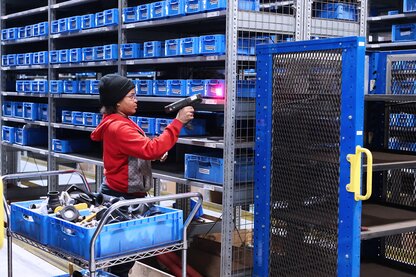
A New Story for Inventory at Aebi Schmidt Canada
The procurement team at Aebi Schmidt Canada knows being a swift and dependable resource for customers is non-negotiable. In high-pressure environments like infrastructure, road maintenance, and airport runway operations, there’s absolutely no room for error. Customers depend on the parts department, because project deadlines and public safety depend on them.
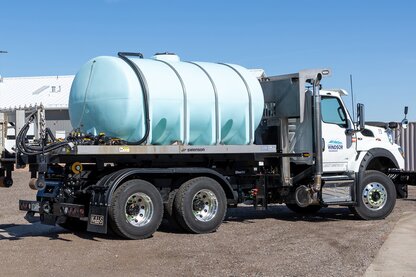
Taking Liquid to the Ice Fight: The Swenson and Kois Brothers’ Partnership
One of Swenson’s first dealers, Kois Brothers Equipment Company, was instrumental in testing and developing some of the initial liquid spreaders and anti-icing equipment beginning in the 1990s. The Denver, Colorado-based truck equipment supplier saw the potential in the early stages of this new trend in snow removal. We sat down with Dave Kjederquist from Swenson as well as Gary, Ernie, and Scott Kois to discuss the experience and share laughter with good friends. Although the Kois brothers recognized the bright future for deicers and sprayers, it took teamwork between Kois and Swenson to design and build an efficient and reliable system.